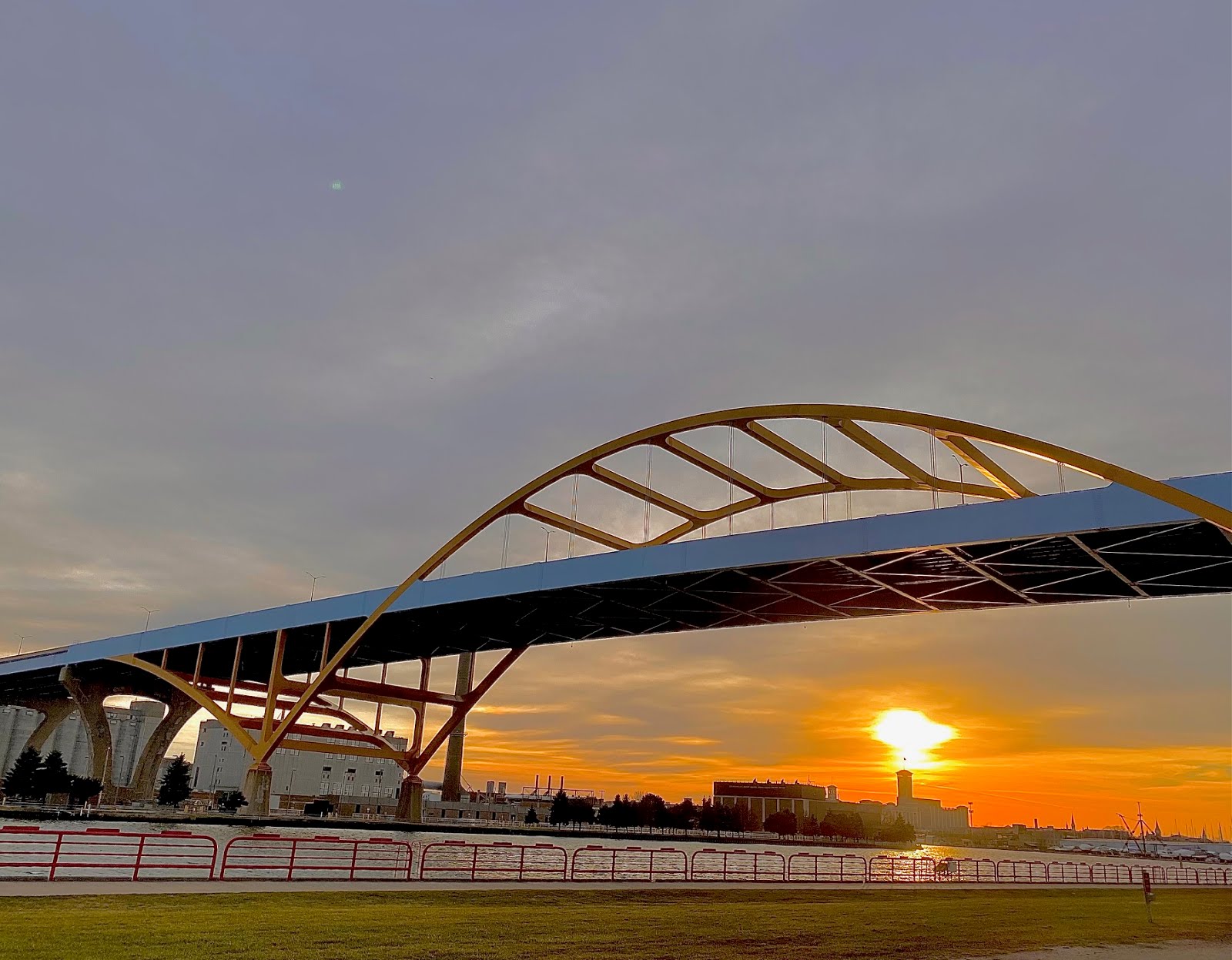Smokestack emissions damage the air, and water, too
When you read that states like Wisconsin are suing to stop new power plant smokestack emission rules - - thus willing to tolerate the release of harmful greenhouse gas emissions - - keep in mind that means more than citizens breathing dirty, unhealthy air as a matter of policy.
Great Lakes researchers are saying that those same greenhouse gas emissions are accelerating toxic algal blooms and waterway 'dead zones', damaging drinking water quality, and threatening a world-class fishery:
Separately, Ohio also has the country's most polluted river for the 7th year in a row, with ag and fertilizer sources major contributors, this report says.
Remember that Lake Michigan has its own large, polluted 'dead zone' near Green Bay, but Wisconsin's Department of Natural Resources refuses, as I wrote last year, to take any initiative to combat it:

Great Lakes researchers are saying that those same greenhouse gas emissions are accelerating toxic algal blooms and waterway 'dead zones', damaging drinking water quality, and threatening a world-class fishery:
The number of severe algal blooms in Lake Erie will likely double during the next century, according to new research from The Ohio State University.
Although fertilizers from farms played a major part in last year’s record-breaking algae bloom in Lake Erie, climate change is also a driver, reported Noel Aloysius of Ohio State and Hans Paerl of the University of North Carolina at Chapel Hill...
Moreover, power plants help create conditions that are conducive for algal blooms, researchers say.Ohio is one of the states fighting the cleaner air rules.
Separately, Ohio also has the country's most polluted river for the 7th year in a row, with ag and fertilizer sources major contributors, this report says.
Remember that Lake Michigan has its own large, polluted 'dead zone' near Green Bay, but Wisconsin's Department of Natural Resources refuses, as I wrote last year, to take any initiative to combat it:
The dead zone in Green Bay's waters is caused by phosphorus from dairy herd runoff and other sources, and yes, its origins began before Scott Walker put his "chamber-of-commerce mentality" atop the DNR to serve corporate interests and donors.
But they've worked hard to create and manipulate a dead zone in the agency by doing with the phosphorous threat what they have done with other forces menacing the state's waters, wetlands and environment:
As little as possible, as the Journal Sentinel notes: New regulations will not be coming from state regulators, said DNR Secretary Cathy Stepp.
...When it comes to Green Bay's expanding stagnation, our do-as-little-as-it-can DNR is...green-lighting more and bigger industrial-scale dairy operations and farm fertilizing through airborne manure spraying.
All of which adds contaminates that get into the very rivers, streams and lakes which the DNR is supposed to manage in the public interest on a trust basis for the people.
Add to this mess the culpability of the GOP-led Legislature, also doing Walker's bidding, which took an existing phosphorous control and reduction plan hammered out with business sector participation, and implemented in 2009 and intentionally weakened it last year by granting to some big phosphorous dischargers another twenty years to comply.Wisconsin has long-delayed complying with multiple responsibilities under the US Clean Water Act, and subsequent events indicate continuing and fresh disinterest in preventing or solving these problems:
* The DNR recently refused to implement a judge's order following a lengthy hearing to limit the number of manure-producing cattle at a large dairy cattle operation.
* Though such so-called CAFOs, or Concentrated Animal Feeding Operations, can pollute nearby wells, and measurable contamination of harmful nitrates is increasing statewide.
* And the bigger picture is no better: the state has 700 impaired waterways by the agency's own count and in 2014 added dozens more to the list; paradoxically, the DNR is currently reviewing whether a major Walker donor can build an 18-hole golf course on 247 acres of forested, wetland-laden land at the edge of Lake Michigan near Sheboygan through which runs The Black River, one of those impaired waterways.
Opponents of the project's groundwater demands, deforestation, and planned incursion into an adjoining state park recently told the Wisconsin Natural Resources Board - - to which the DNR reports - - that test wells were drilled on the site without permits, among other concerns
See and hear the opponents' ten-minute presentation beginning at the meeting's 2:21 mark, followed by about five minutes of Q & A.









No comments:
Post a Comment